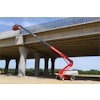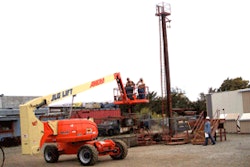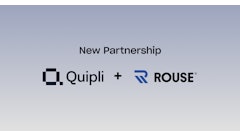Every time I ask a rental company CEO how business is, I hear "It would be great if all my competitors didn’t low-ball their rates." And if I go into a region and talk to all or most of the rental companies in that area, I hear that competitors are low-balling their rates. But if they all tell me that (and of course they are not participating in this folly), then who is it exactly that is low-balling the rates?
Sure, there are people out their sometimes offering rates lower then yours, but I suspect your sales personnel, along with customer demands, generate a good chunk of these comments, whether they actually take place or not. Let’s face it, you pay similar dollars for similar units in the rental fleet and have to generate enough rentals to pay for the unit, along with the interest, cover your direct expenses associated with your rental activity, cover your general and administrative expenses, and after all that, produce a profit and adequate return on equity.
The only way to offer better-than-market rental rates is to rent units that are paid off or buy used units and thus, have a lower acquisition cost compared to a new unit. Or, units with low time utilization might warrant a lower rate to generate more utilization. It would not be unusual for a rental manager to set rates based on time utilization.
While we’re at it, let’s discuss what’s more important, profits or cash flow. The answer is cash flow - without question - because the only reason you are in business is to generate cash. Also, keep in mind that a minor fluctuation in rental revenues has a material effect on cash flow. For example, a 10-percent drop in rental revenues could generate a 30-percent reduction in cash flow. Remember those note obligations.
And a profitable rental rate discussion would not be complete without noting that rental rates are not in the top three reasons customers did not give you the business. Availability, delivery requirements, quality of unit and extras required on the unit comes before rental rates. Customers might tell you they can get it cheaper somewhere else, but if you have the unit, it works and you can deliver it when they need it, your chances of getting the business is still good.
When you get right down to it, setting profitable rental rates is a balancing act regarding equity in the business, borrowing power, cash balances, floor plan programs available, the make up of the rental fleet, interest rates, new or used fleet additions, fleet replacement policy, the wholesale market, delivery capability, accounting and system controls, business acumen, customer base, competitors in the area and general business conditions. See, not too much to worry about.
To achieve the goal of setting profitable rental rates you have to consider each rental unit as a separate business. It is either earning enough to cover debt services and expenses and adding a contribution margin to cover G&A expenses and profit or it isn’t. If it isn’t, steps need to be taken to find out why and appropriate changes made. If it can’t be fixed, the unit has to be moved out of the fleet as soon as possible and sales proceeds used to pay off any acquisition debt. Hopefully the proceeds exceed the loan balance.
After reviewing units, then it is groups of units, then it is type of equipment, size of equipment, and so on until the entire fleet is covered and corrective action noted for each segment down to individual units.
Fleet units might lack adequate time or dollar utilization, or operating expenses might be in excess of the norm. If time utilization is low, then lowering the rates might be necessary to stimulate additional usage. This would be one time where lowering the rental rate is the answer to profitable rental rates. If business conditions slow to the point where it is not possible to charge what you need to make a unit profitable, then adjusting the size of the fleet might be the only answer. Scheduling the replacement of the fleet in such a way so you have units in every category "in the money" after paying off debt is really an industry rule that should be followed.
There is really no "rule" for setting profitable rental rates, because unless the bulk of the rental fleet is profitable, the business will not be. The rental business is an asset management business first, with income considerations second. Get a proper dollar utilization for the overall fleet and your concerns should be minimal.
In today’s market with 8 percent money paid off over 60 months, you need a 25-percent dollar utilization to just cover the debt service. After direct operating expenses, the company should reflect at least a 40-percent gross profit using depreciation methods that produce a 40-percent residual at the end of the 60-month period. If your results are much different from this you might want to benchmark your operation against some others to see what you can do to fix the problem.





















![Building Angled Sm Edit 6050b8d213f1b[1]](https://img.forconstructionpros.com/mindful/acbm/workspaces/default/uploads/2025/09/building-angled-sm-edit6050b8d213f1b1.Ygq5aAos3b.png?ar=16%3A9&auto=format%2Ccompress&crop=focalpoint&fit=crop&fp-x=0.53&fp-y=0.23&fp-z=2&h=135&q=70&w=240)